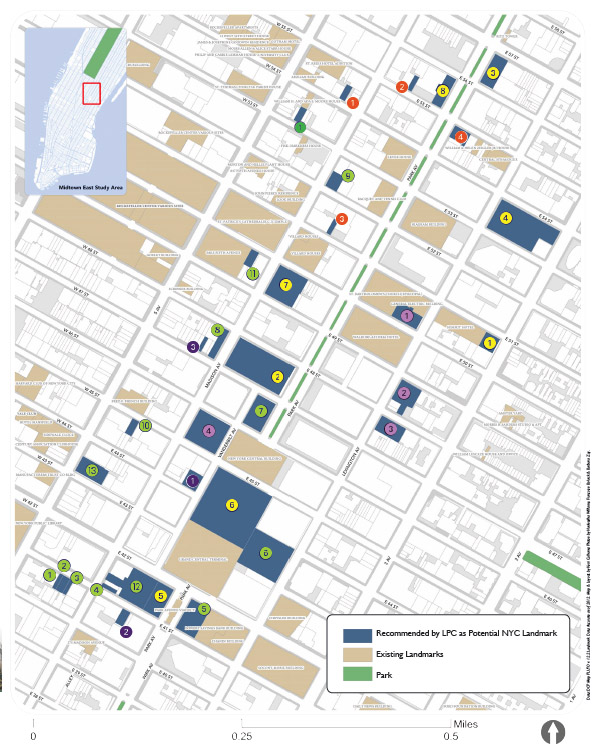Historic Districts Council Identifies 33 Potential Landmark Buildings in East Midtown Rezoning Proposal
Click here to view the gallery of buildings.
Click here to view full map
As the New York City Department of City Planning moves forward in the coming months with its proposal to rezone a large section of East Midtown to encourage taller buildings, the Historic Districts Council has compiled a list of significant buildings in the area that could be endangered by the rezoning. The Historic Districts Council is the citywide advocate for New York City’s historic districts and buildings meriting preservation.
“As New York’s most prominent business district, East Midtown is home to many significant commercial buildings,” according to Simeon Bankoff, Executive Director of the Historic Districts Council. “While there is certainly room for exciting and needed new development in the area, it is important to consider the numerous unprotected buildings of architectural and historic significance in order to preserve the essential character and history of the district,” said Bankoff.
In fall 2012, the Historic Districts Council surveyed the entire area proposed for rezoning to identify East Midtown’s architecturally and historically significant buildings worthy of consideration for landmark status. The survey tours were led by members of the Board of Directors of the Historic Districts Council, architects and architectural historians and attended by representatives of Manhattan’s Community Board 5, who contributed invaluable knowledge about buildings at risk. The result was a list of almost 80 significant buildings for City Planning to consider as part of its environmental review of the project. Historic Districts Council has further refined the list to 33 buildings worthy of New York City Individual Landmark designation, and has prepared official Requests for Evaluation to be submitted to the Landmarks Preservation Commission for each of these 33 buildings.
The buildings represent the area’s rich range of architecture: remaining 19th and early 20th century buildings that recall the residential, pre-Grand Central days of the area, hotels and office buildings that rose around Grand Central soon after its completion in 1913, and post-World War II modernist office buildings that helped solidify the district’s status as one of the world’s premier business addresses. “Together they tell the story of a transformative period in New York City history,” according to Françoise Bollack, a New York City architect and President of the Historic Districts Council.
The extent to which the East Midtown Rezoning proposal would increase the density of central Manhattan is illustrated in a map of the area created by the Historic Districts Council. Proposed rezoning boundaries are overlaid on the map of existing and proposed landmarks. The map shows that a majority of the proposed rezoning area would be unchallenged for development. Thumbnail photographs accompanying the map show the 33 buildings that the Historic Districts Council is proposing for landmark protection, with their address, date of construction, architect, and built and proposed FARs. For a complete list of identified buildings including images and descriptions, go to http://hdc.org/hdc-across-nyc/manhattan/proposed-east-midtown-rezoning-proposed-individual-landmarks.
